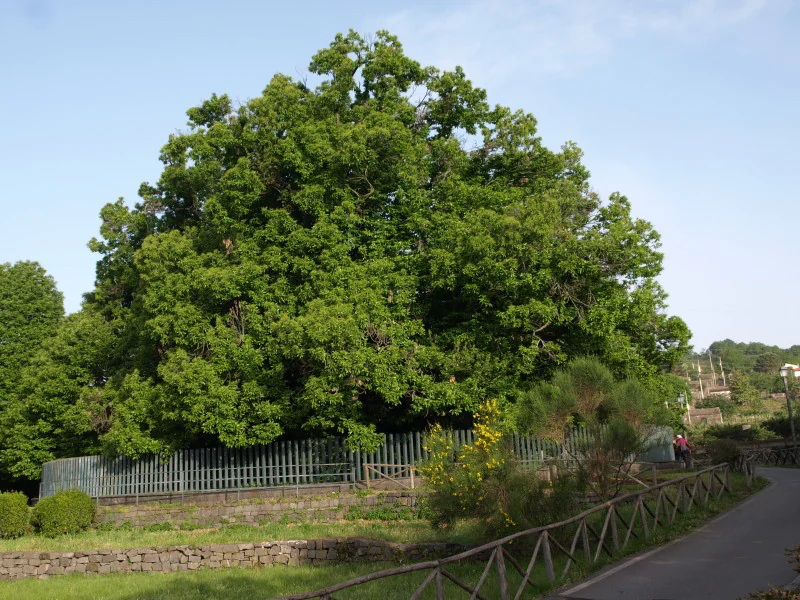The Legend and History of the Ancient Chestnut Tree
Located in the town of Sant’Alfio, on the eastern slopes of Mount Etna in Sicily, Italy, the Chestnut of One Hundred Horses (Castagno dei Cento Cavalli) is considered the largest and oldest known chestnut tree in the world. Its age is estimated between 2,000 and 4,000 years, with some recent studies suggesting it is around 2,200 years old. Remarkably, the tree has survived just 8 kilometers from the crater of Mount Etna—one of Europe’s most active volcanoes.
The name “Chestnut of One Hundred Horses” originates from a local legend. It is said that a queen (possibly Giovanna of Aragon or Giovanna I of Anjou) and her entourage of 100 knights took refuge under the tree’s enormous canopy during a fierce storm while on a hunting trip near Mount Etna.
Record-Breaking Size and Ecological Value
The Chestnut of One Hundred Horses holds a place in the Guinness World Records for having the largest tree trunk circumference ever measured—57.9 meters (190 feet) as recorded in 1780. Although the trunk has since split into three large sections, they all share the same root system, confirming it is still a single living organism.
With a height of around 22 meters and a canopy spreading up to 62 meters, this chestnut tree is not only a natural wonder but also plays an important role in the local ecosystem. Each year, it produces approximately 400 kilograms of chestnuts, contributing to the region’s agriculture and culinary heritage.
Conservation and Recognition of a Natural Heritage
In 1965, the Chestnut of One Hundred Horses was declared a national monument of Italy and has been protected by local authorities ever since. In 2021, it was named Italy’s “Tree of the Year,” representing the country in the “European Tree of the Year” competition in 2022.
Conservation efforts include monitoring the tree’s health, conducting DNA studies, and controlling harmful insects. One of the current threats is the invasive Asian wasp, which can cause root rot and threaten the tree’s survival.
A Cultural Icon and Artistic Inspiration
Beyond being a natural monument, the Chestnut of One Hundred Horses has inspired numerous works of art and literature. Sicilian poet Giuseppe Borrello wrote a poem in Sicilian language praising the tree as a shelter for the queen and her knights during the storm.
The tree has also appeared in paintings and writings over the centuries, becoming a symbol of endurance and the deep bond between humans and nature.
Conclusion
The Chestnut of One Hundred Horses stands as a living testament to nature’s resilience and adaptability in the face of extreme challenges. Protecting and honoring this tree is not only the duty of the local community but also a valuable lesson in the harmony between humans and the environment—especially in the era of climate change.
